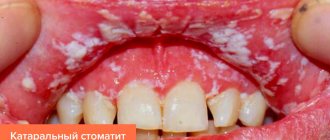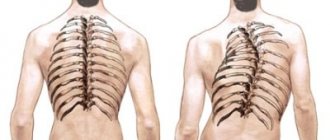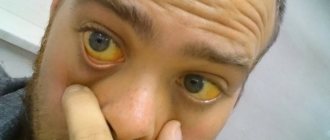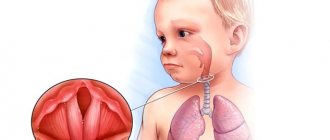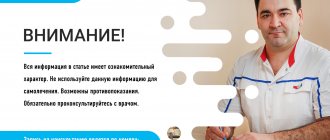Angulitis, which is popularly called seizures, is considered by many to be a childhood disease, but this is far from the case.
Such painful wounds, covered with a dry crust and located in the corners of the mouth, also occur in adults, just less frequently than in children. When a seizure occurs, many people try to mask it using various cosmetics, which should not be done, as this leads to a worsening of the condition.
At the initial stage, the disease is asymptomatic, and only in rare cases a small bubble of liquid may appear at the site of the future wound. More often, a person realizes that he is sick only at the moment when, due to unexpectedly formed ulcers and cracks on the skin, it becomes painful to eat and speak. Any opening of the mouth begins to be accompanied by pain of varying intensity.
To treat seizures, both medications and folk remedies can be used with high efficiency.
What it is?
Zaeda is an inflammation of the skin and mucous membrane in the corners of the mouth, which occurs very often at any age, in almost everyone. In addition to the skin, the mucous membrane of the mouth can also be affected when jammed. Of course, jam is not a medical term, but a folk one, but it has become so integrated into the medical terminology of Russian-speaking doctors that the real names of this pathology can rarely be heard.
Medical names for zayeda:
- Angulite;
- Angular cheilitis (cheilitis - inflammation of the lips);
- Angular stomatitis;
- Slit-like impetigo (streptococcal infection).
And angulitis received the name “jam” because it was previously believed that the corners of the mouth became inflamed when a person ate something wrong or overate (“jaze” - because of food).
So, a jam is usually a skin defect, which is accompanied by discomfort, an annoying flaw in the mirror, and does not pose any danger to human life and health. But angulitis can also be a symptom and manifestation of other diseases, for example, stomatitis, lack of vitamins or reduced immunity. Therefore, in any case, you should pay attention to the condition of your lips.
Treatment of infectious angulitis
When angulitis develops due to infection, then the appropriate remedy is needed. Fukortsin is often prescribed as the first line, which has both antibacterial and antifungal activity, and forms a long-term, protective film at the site of damage.
In eliminating bacterial infections, Metrogyl Denta gel, containing Metronidazole and Chlorhexidine as active ingredients, has gained great popularity. Older, but also effective combined broad-spectrum agents are ointments: Methyluracil ointment and Trimistin. Tetracycline ointment and Levomekol are excellent against streptococcal infections.
If the infection is of a fungal nature, then the main treatment is antifungal ointments: Levorin, Nystatin, sulfur-salicylic, and Clotrimazole. Acyclovir is most often prescribed against herpes lesions in the mouth.
Causes
In adults, seizures usually appear during the cold season, when the activity of metabolic processes in the body decreases. One of the predisposing factors is the presence of chronic somatic diseases, which are characterized by seasonal exacerbations. A weakened immune system leads to increased activity of opportunistic microflora.
The immediate cause of seizures due to decreased immunity are:
- bacteria (mainly streptococci);
- yeast-like fungi of the genus Candida;
- viral infection (most often the herpes virus).
Please note: external factors leading to jamming include prolonged wetting of the corners of the mouth with saliva due to malocclusion and hypersalivation (increased salivation). In this case, maceration (impregnation with liquid and softening) of the skin occurs.
Factors contributing to the activation of microflora:
- ARVI (including influenza);
- general hypothermia;
- overheating of the body;
- prolonged exacerbations of chronic pathologies;
Zaeda can appear after direct contact with a sick person (for example, when kissing) or when using his dishes and personal hygiene products (toothbrushes, etc.).
Reasons for seizure also include:
- skin microtraumas;
- dry skin;
- low level of hygiene (especially with pathological occlusion, use of braces and carious lesions);
- hypovitaminosis, in particular – vitamin B2 deficiency in the body.
Some diseases (for example, diabetes) can prolong the healing process of lesions and complicate their course.
Seizures usually appear during the cold season, when the activity of metabolic processes in the body decreases. One of the predisposing factors is the presence of chronic somatic diseases, which are characterized by seasonal exacerbations. A weakened immune system leads to increased activity of opportunistic microflora.
The immediate cause of seizures due to decreased immunity are:
- bacteria (mainly streptococci);
- yeast-like fungi of the genus Candida;
- viral infection (most often the herpes virus).
Please note: external factors leading to jamming include prolonged wetting of the corners of the mouth with saliva due to malocclusion and hypersalivation (increased salivation). In this case, maceration (impregnation with liquid and softening) of the skin occurs.
Factors contributing to the activation of microflora:
- ARVI (including influenza);
- general hypothermia;
- overheating of the body;
- prolonged exacerbations of chronic pathologies;
Please note: seizures can appear after direct contact with a sick person (for example, when kissing) or when using their utensils and personal hygiene products (toothbrushes, etc.).
Reasons for seizure also include:
- skin microtraumas;
- dry skin;
- low level of hygiene (especially with pathological occlusion, use of braces and carious lesions);
- hypovitaminosis, in particular – vitamin B2 deficiency in the body.
Important: some diseases (for example, diabetes) can prolong the healing process of a seizure and complicate its course.
Additional measures and prevention
In addition to therapy that eliminates the cause, auxiliary therapy is required to prevent relapses. Vitamin ointments Panthenol and Bepanten, providing the skin with additional pantothenic acid. Vitaon (one of Karavaev’s balms) is a complex complex based on plant substances (essential oils, calendula, fennel, rose hips, pine, chamomile, mint, St. John’s wort, etc.). Vitaon accelerates regeneration processes, inhibits the development of inflammation and has a slight antiseptic effect. Zinc paste creates good protection against excessive evaporation of moisture from the epidermis and protects against re-entry of microorganisms. And of course, you need proper, fortified nutrition. Skin health is primarily affected by a lack of vitamin B2 in food.
Symptoms and photos
In adults, a crack in the corner of the mouth during its formation goes through several stages. Initially, bubbles or nodules form in the corner of the mouth (see photo above). Bacteria penetrate the skin and mucous membrane of the oral cavity, and are accompanied by the following symptoms:
- burning around the mouth;
- itchy sensations;
- pain when opening the mouth;
- wet discharge from mother-in-law;
- swelling of the affected area;
- an unpleasant feeling of tightness.
During this period, any movement of the lips (smiling or chewing food) can provoke rupture of the skin, resulting in the formation of cracks. Afterwards, the skin may begin to peel or become covered with a crust (plaque). With even slight movement of the lips, tears form, and this is accompanied by pain.
A crack caused by streptococcal fungal infection can lead to deep tears (even bleeding).
Difference from herpes
Seizures are divided into certain types depending on the initial cause of their appearance, which is easiest to determine at the second stage of development of the pathology - when the crusts have not yet appeared, but there is already a crack itself and discharge from it.
Visually, at the third stage of development, it is almost impossible to distinguish it from herpes. So how are these two diseases different?
- The appearance of herpes is caused by the presence of a herpes infection in the body. Jams can be the result of many infections, fungi, and even mechanical damage, which subsequently becomes infected from the outside.
- Herpes appears around the mouth on the lips, under the nose and on other parts of the body. Seizures appear exclusively in the corners of the mouth.
- Herpes looks like many small sores that develop into one large wound. The jam starts directly from the cracks.
- Herpes, if left untreated, can grow in any direction, making the person want to constantly scratch around the affected area. Seizures can spread further only as a result of constant mechanical damage to the skin, and this again occurs through cracks.
Since seizures and herpes are activated at moments of weakness of the human body, they are often combined into one affected area. It all starts with a banal seizure and continues with herpes. This happens very often. Therefore, it is better to visit a doctor and find out “what exactly” needs to be dealt with and with what drugs.
Herpes
Possible reasons for development
The appearance of a jam indicates not only infection or internal pathological processes, but also the bad habits of the person himself. Regularly licking your lips is a ritual that some people find extremely difficult to break. It is important to understand that regular exposure to saliva, which contains billions of bacteria, has a detrimental effect on the mucous membranes. If a crack has already formed, licking the lips interferes with regeneration and further fuels the infection.
Neglecting the rules of personal hygiene is also fraught with the development of cracks in the corners of the mouth. Possible causes include: microtraumas, lack of cleansing, dirt on the skin.
Eating in childhood most often indicates iron deficiency anemia. Therefore, all pediatricians advise immediately taking a blood test for iron, and not sinning on problems with the baby’s hygiene. The main thing is not to try to correct anemia on your own. Introducing meat and pomegranates in large quantities into the diet can only maintain the existing iron level, but not increase it. Noticed symptoms of anemia? Go to the doctor and undergo a comprehensive therapeutic course.
Cracks in the corners of the mouth can also be a symptom of:
- vitamin B2 deficiency;
- malocclusion;
- missing teeth or incorrectly selected dentures;
- allergic lesions of the oral cavity;
- caries;
- metabolic disorders;
- long-term treatment with strong medications.
What you need to know about chronic recurrent binge eating?
In some cases, therapy gives a short-term effect or does not affect the condition of cracks in the corners of the mouth at all. For frequently recurring seizures, the doctor must conduct a comprehensive diagnosis of the body, identify and eliminate the root cause. What diseases can chronic angulitis indicate?
- HIV. A weakened body becomes easy prey for pathogenic microbes. Most often, cracks cannot be treated, and the surrounding skin becomes covered with a white coating, becomes dry and inflamed.
- Tuberculosis, chronic infectious pathologies. Microtraumas occur due to fungus or mixed flora. Often, recurrent seizures are accompanied by increased night sweats and sudden changes in body temperature.
- Intestinal diseases. Failure of the functionality of the gastrointestinal tract is always associated with disruption of metabolic processes. Intestinal diseases impair the absorption of nutrients, including iron and B vitamins. The lack of these nutrients provokes a decrease in the protective function of the mucous membrane and the development of cracks.
- Diabetes. In diabetes mellitus, an imbalance of mucosal microorganisms occurs. Moreover, by-products of impaired glucose metabolism accumulate in tissues. The result is microtrauma of tissue with a characteristic white coating, which is hidden behind skin folds.
- Oncological diseases. Cancer suppresses the body's protective functions and consumes the lion's share of nutrients, which can lead to a lack of micro- and macroelements and anemia. Recurrent seizures may well be a symptom of a tumor in the oral cavity or gastrointestinal tract.
Diagnostics
After a physical examination with the collection of complaints, a visual examination of the oral cavity and problem areas of the skin, and clarification of the supposed causes of the pathology, appropriate diagnostic measures will be prescribed aimed at identifying the disease that led to such manifestations
Necessary diagnostic methods:
- Bacterial seeding of the contents of conflict with identification of the pathogen and determination of its sensitivity to chemotherapeutic drugs.
- Analysis of immune status to determine functional and quantitative indicators of the state of the immune system.
- Serological studies. Prescribed to identify the cause of seizures, for example, to determine antibodies to the pale spirochete that appear with syphilis.
- Dermatoscopy is a visual assessment of pathologically changed areas of the skin using a digital or optical dermatoscope, which repeatedly magnifies the tissue being examined. The study is necessary for the differential diagnosis of a seizure with a nevus, malignant neoplasm, hemangioma, etc. Prescribed for suspected streptococcal impetigo.
- Skin pH-metry is a diagnostic method that allows you to determine the acid-base balance of the skin using special pH meters. The disease is detected depending on whether the displacement has occurred into an alkaline or acidic environment. Alkalinization of the epidermis occurs in eczema and atopic dermatitis. A shift to the acidic side indicates psoriasis.
- Histology and cytology of altered skin. These are optional studies carried out according to indications to exclude an oncological process.
Based on the suspected cause of the cracks, you may need to consult a venereologist, endocrinologist, neurologist or allergist.
What are lip jams?
Seizures on the lips are a violation of the integrity of the skin or mucous membrane of the lips, which is based on inflammatory changes caused by the action of opportunistic microorganisms. This means that the jam is a small wound on the outer or inner surface of the lips. The most interesting thing is that it is caused by those microorganisms that constantly live in these areas.
But under normal conditions, no pathological manifestations arise. Consequently, sticking on the lips is not just a local problem with the skin, but a certain marker of a decrease in the overall reactivity and protective properties of the body.
The above data explains why lip jams occur most often during the cold season. After all, this time is characterized by a decrease in the activity of all metabolic and metabolic processes in any organism. Persons with chronic diseases with regular seasonal exacerbations are more susceptible to such effects. Of course, against such a background, first of all, the immune system suffers, which is not able to keep all microbes under control. The result is sticking on the lips and a whole host of similar minor symptoms that indicate an immune imbalance in the body.
In the development of lip jams, several stages can be distinguished. The first stage involves the introduction of pathogens into the skin or mucous membrane. In this case, either small blisters or papules (nodules) appear.
They are accompanied by severe itching, burning and discomfort in the affected areas. Usually at this time a person provokes a rupture of such primary elements. A small wound surface in the form of an ulcer forms at this site. It may bleed and be accompanied by discharge and crusting. In everyday life, such a process causes noticeable discomfort, which manifests itself when talking, eating, or laughing. At this time, stretching of the skin and cracks on the lips occur. They become frequent companions of neglected food.
How to treat seizures?
In case of a mild form of angulitis, it is not necessary to consult a doctor, however, it is better not to continue treatment of angulitis at home in adults (the remedies are described later in the article) if the healing process does not occur even after several days of treatment. Otherwise, it is better to consult a doctor.
Traditional treatment for seizures in adults includes the following points of therapy:
- Anti-infective therapy;
- Therapy aimed at accelerating healing;
- Eliminating the physical causes of seizures.
Seizures in the corners of the mouth: treatment with ointments
At home, when seizures occur, antiseptic, antibacterial, antifungal and combination ointments are used, depending on the pathogen. Antibacterial and antifungal agents are more effective than antiseptics, since they not only prevent the proliferation of microorganisms, but also contribute to their death. Good results can be achieved by combining solutions and ointments.
Below are the TOP 5 types of ointments for treating seizures at home:
| Name of ointment | Description |
Ointments with antiseptic effect:
Prescribed for the following cases: common and uncomplicated streptococcal and candidal infections. | Ointments can be applied to the corners of the lips and surrounding areas of the skin in a thin layer, but a better effect can be achieved with ointment compresses. To do this, the medicine is applied to a sterile napkin and fixed in the corners of the lips with an adhesive plaster overnight. Antibacterial ointments are ineffective against fungal infections; moreover, they can aggravate the course of candidiasis. Levomekol ointment is not suitable for treatment in the lip area. Oxolinic ointment and Acyclovir are ineffective against streptococcal and candidal infections. |
Antifungal agents (fungicides):
Prescribed for the following cases: candidal infections. | Antifungal ointments are used by applying them to the corners of the mouth in a thin layer or in the form of compresses 3-4 times a day. Fungicide solutions are used to treat not only the corners of the mouth, but also the entire oral cavity. This is necessary for the treatment or prevention of candidal stomatitis. Fungicides are ineffective against streptococcal infections. |
Antibacterial agents:
Prescribed in the following cases: streptococcal seizures | Ointments can be applied to the corners of the lips and surrounding areas of the skin in a thin layer, but a better effect can be achieved with ointment compresses. To do this, the medicine is applied to a sterile napkin and fixed in the corners of the lips with an adhesive plaster overnight. Antibacterial ointments are ineffective against fungal infections; moreover, they can aggravate the course of candidiasis. Levomekol ointment is not suitable for treatment in the lip area. Oxolinic ointment and Acyclovir are ineffective against streptococcal and candidal infections. |
Combined ointments:
Prescribed for the following cases: chronic seizures; seizures caused by mixed infection; in the presence of concomitant atopic dermatitis in the area around the mouth. | Combined ointments contain an antibiotic, an antifungal component and a glucocorticosteroid hormone. These remedies can only be prescribed by a specialist when other treatment methods do not help. |
Remedies that promote rapid healing of a seizure:
Prescribed in such cases: all types of jam. | In order to quickly get rid of jams, in addition to antibacterial ointments and antiseptics, use ointments that promote wound healing. But you need to know that these ointments are not prescribed from the first day of therapy. They are connected to the main treatment when the first positive results appear: on the 2-4th day. Healing ointments are applied in a thin layer 3-4 times a day at least an hour after using antibacterial ointments. |
Usually, seizures do not require general treatment; they heal with the use of only local medications. But if the lesions have spread to large areas of the skin, do not heal for a long time and are associated with immunity problems, then the use of general remedies is necessary. They are prescribed only by a doctor.
What is zaeda?
Zaeda is a common name for inflammation of the mucous membrane in the corner of the mouth. Medically called angulitis or angular cheilitis. Since it appears precisely in the corners of the lips. In the form of irritation, redness, cracks, ulcers or crusts. Seizures cause discomfort from aesthetic to unpleasant sensations when talking and eating.
Reasons for sticking in the corners of the mouth
Normally, the oral mucosa independently prevents the penetration of infection due to its structure. But with a decrease in immunity, this ability is significantly reduced. Therefore, angulitis in children and adults most often appears in the autumn-spring period (lack of vitamins), during colds and during exacerbation of chronic diseases (decreased immunity). There are many reasons for this:
• frequent damage to the mucous membrane of the corner of the mouth (banal injury to the corner of the mouth, frequent licking of the lips);
• disruption of the microflora of the oral cavity leading to seizures and other stomatitis;
• overdrying of lips in the wind makes the mucous membrane of the corners of the mouth more vulnerable;
• at a dentist appointment – when you have to keep your mouth wide open for a long time. The corner of the mouth becomes dry, its washing and banal wetting with saliva are impaired. Any touch, even gentle, to the mucous membrane of the corner of the mouth can be unpleasant or painful. Prevention of this is simple and banal - lubricate the corners of the mouth with Vaseline;
• after treatment with antibiotics. When the microflora of the whole body is disturbed;
• increased activity of Candida fungi;
• exacerbation of herpes.
Types of jam
Seizures in the corners of the mouth are caused by three types of microflora - bacterial (staphylococci and streptococci), Candida fungi and herpes.
Ideally, angulitis should be treated with means that will affect exactly the microflora that caused the seizure:
Treatment for jamming in the corners of the mouth
Treatment of a stuck mouth is, on the one hand, trivial, but on the other hand, it is not entirely simple. We have already found out that the main cause of jamming is microtrauma and microflora entering the mucous membrane. And it makes no difference whether it is foreign to the body or healthy, its own. And if the immune system is weakened, then it is not able to fight any microflora - neither its own nor the alien one. Any of them becomes pathological - negatively affecting. Therefore, the treatment for mouth jam is:
• simple prevention of jamming - do not use other people’s spoons and hygiene products (toothbrushes, etc.)
• in case of the first signs of mouth seizure, treat the inflammation of the corner of the mouth locally: with ointments, powders, etc.
Local treatment for jam consists of applying drugs to the corners of the mouth. Moreover, the treatment is step-by-step - first remove the pathogens, and then help the corners of the mouth recover. It’s better to start with:
• decoctions of chamomile, calendula
• in case of seizures against the background of dry, cracked lips, it is rational to lubricate them to moisturize them with oils (rosehip, sea buckthorn, olive, oil solutions of vitamins A and E)
• in case of long-term and ineffective treatment of jam, scrapings are made to determine the main microflora in the corners of the mouth. Most often these are staphylococci, streptococci and Candida fungi. And drugs are prescribed to target them specifically:
If the jam looks red, with a thick crust, then the cause is staphylococci or streptococci
Its treatment consists of applying antibacterial ointments:
• methyluracil
• leomycolic
• kamistad ointment or gel
• crushed streptocide tablet can be applied as a powder
If the jam is varnish-red or has a white coating, then Candida mushrooms are to blame
Then treatment with antifungal agents:
• levorin ointment
• nystatin ointment
• candida ointment
With herpes, seizures may appear on the lips
Treatment of herpetic angulitis is carried out with general treatment and place:
• Gerpevir ointment
• Ameskin
• Viferon
A universal remedy for the treatment of post all seizures is Cholisal gel. It is effective against bacteria, viruses and fungi.
When the acute phase of angulitis has passed, for faster healing, use the following:
• sea buckthorn oil
• rosehip oil
General treatment for stuck lips
Increasing immunity and strengthening it:
vitamins of groups B, A and C in the form of vitamin complexes or an increase in the diet of foods containing them:
• B vitamins contain: milk, cheese, cottage cheese, broccoli, fresh peas, green beans, spinach and bran.
• Microelements in foods: peaches, pomegranates, nuts, parsley, asparagus, buckwheat, seafood, pumpkin seeds.
If seizures do not go away for a long time, you need to understand the common causes of decreased immunity, chronic diseases and influence them.
To treat a mouth jam, it is not necessary to take an antibiotic, or anything else, orally before or after a meal, and do not inject it intramuscularly with small or large syringes. It is enough to sprinkle or moisten it several times (depending on the drug you choose) directly into your mouth. And repeat everything as prescribed in the instructions for the drug for several days.
What if I go untreated? A rhetorical question. There will be no colossal harm, not counting cosmetic ones. Typically, seizures go away on their own in four to five days if the body receives energy and vitamins from somewhere (usually through food, but there are other non-traditional options). If you don’t have access to these resources, then write “lost”, and the jam will decorate your face until your immunity increases. Since Lomonosov also proved that “Nothing comes from nowhere and goes nowhere,” it becomes clear that the fight against binge eating will only end with an increase in the body’s immunity, to strengthen which it must be reinforced with something somewhere.
June 24, 2019
Source: www.ardenta.ru
Vitamins
The appearance of a jam indicates not only the presence of some pathogen, but also the weakness of the skin, since any infection manifests itself in the weakest places.
This means there are problems with the skin and vitamins that are responsible for its condition help solve them. Namely: A, B2 and E. It is the presence of these vitamins that needs to be replenished in order to get rid of unpleasant and painful wounds. This can be done quickly with complex pharmaceutical preparations containing these vitamins.
Also, vitamin deficiency can be replenished from food, but this will last longer than with the use of the drug.
Treatment
The method of treating angulitis depends on the reasons that provoked its appearance. What to do in the event of the development of a serious pathology - to treat yourself or go to a doctor - is decided by the person himself. In the absence of proper treatment, cheilitis can turn into purulent abscesses.
- Trauma, bad habits. Correct the prosthesis, temporarily avoid going to the dentist, do not perform active actions with the throat and lips, take proper care of the oral cavity, and brush your teeth thoroughly. It is recommended to numb the surface with lidocaine-based solutions. Treat with antiseptics, stimulate healing with rosehip or sea buckthorn oils. It is also not forbidden to use cream for dryness and flaking.
- Leukoplakia. Stop smoking, eliminate spicy foods from your diet. For therapy, use a solution of vitamin A (topically), E, B6 - orally for 30 days.
- Candidiasis. Apply Lamisil cream three times a day to the crack. Consultation with a specialist is recommended.
- Tuberculosis. Treatment against the background of tuberculosis is carried out in conjunction with the main therapy. Cracks in the corners of the lips are eliminated with an antiseptic and anti-tuberculosis drugs. In such a situation, a person complains that the corners of his lips hurt.
- Syphilis. Therapy is similar to tuberculosis. As an addition, agents to eliminate candidiasis can be used.
- Allergy. The use of antiallergic drugs externally and internally. Termination of exposure to the irritating factor.
- Weather. Reducing time spent outdoors, using lip liner. Treatment with Bepanten, Panthenol.
- Hypovitaminosis B2. Taking B vitamins, visiting a specialized doctor. Rosehip oil and Solcoseryl are used for healing.
- Anemia, thyroid disease, HIV infection. Treatment is carried out taking into account the local picture. Similarly with therapy for candidiasis and leukoplakia.
- Atopic cheilitis. A diet excluding alcohol, sweets, and fatty foods. Taking antiallergic drugs, vitamins. Anesthesia, use of antiseptics, use of steroid liniments: adults – Lorinden-S; children - Traumeel-S.
- Chronic recurrent crack. Maintaining oral hygiene, bandages with solcoseryl, correction of emotional background, treatment of concomitant pathologies.
You should forever give up the habit of licking your lips outside in windy weather.
Folk remedies
Many people are treated with folk remedies, which sometimes drive themselves into a serious trap. Despite the harmlessness of irritation in the pharynx area, it can cause irreparable harm to the body.
- Ear wax will help with cracks in the corners of your mouth. You need to take it out with a cotton swab and lubricate the angulite. This method is also effective for herpes.
- Thermal water is also a good helper in the fight against cracks. An analogue of such treatment is hygienic lipstick. 5-6 times a day is enough for the wounds to begin to heal and go away.
- Goose fat, beeswax, and Vaseline are used for angulitis on the corners of the pharynx. Olive, rose hip, tea tree, and sea buckthorn oils are effective. Infusions of chamomile, calendula, and sage help. To soften the surface of the crust on the crack, it is smeared with honey or butter.
- A common folk remedy for wounds on the corners of the mouth is the juice of Kalanchoe leaves, fresh stems of celandine, plantain, and garlic. The disadvantage of this treatment is the possible burning sensation. It shouldn't be scary.
- Use hair that needs to be rubbed every day along the edges of the lips. Perhaps the method helps, to each his own. They also use the dull side of a knife to remove cracks. They are passed over the inflamed area several times a day.
Folk remedies
When treating a jam in the corners of the mouth, excellent results are achieved using traditional medicine:
- Earwax. It will have to be removed using a cotton swab. Treat the affected areas with it. Carry out the manipulation 2 times a day.
- Beeswax. Use it to lubricate cracks on the lips and blisters. Carry out the procedure 2-3 times a day.
- Sea buckthorn oil. This product is famous for its wound-healing properties, while being absolutely harmless. Apply it to the affected areas 2-3 times a day.
- Herbal decoctions. For these purposes, you can use chamomile, St. John's wort, and calendula. Take 20 g of raw material and pour 200 ml of boiling water. Leave for 30 minutes, filter, then soak a cotton pad in the broth and apply to the affected areas. The duration of the procedure is 20 minutes, it is carried out 2 times a day.
It is difficult to say how effective such methods are. It is better to choose medications.
Angulitis: clinical manifestations
The symptoms of angulitis are very similar to the manifestations of herpes, so it is extremely important to promptly contact a specialist who will make the correct diagnosis and tell you how to quickly cure angulitis.
Symptoms of seizure:
- redness in the corners of the mouth;
- cracks;
- multiple blisters with purulent contents;
- slight bleeding (not always);
- purulent crusts.
Treatment of lip jams in adults depends on the etiology and form (acute or chronic). It is very important to start treatment on time, because without it, the affected area can increase, causing significant discomfort to the patient.
Prevention
The occurrence of seizures can be prevented by following the following recommendations:
- If seizures bother you quite often, you need to undergo a full examination. Perhaps the cause of the disease is hidden in the body.
- Monitor the condition of your mouth and teeth. Get a timely preventive examination from your dentist. Caries, tartar, poor-quality dentures - all this can contribute to the appearance of angulitis.
- Proper nutrition will help get rid of an unpleasant disease. The diet should contain foods rich in vitamins B2, C, E.
- Carry out timely vitamin therapy. But it is worth remembering that hypervitaminosis can also cause seizures.
- There is no need to allow your lips to become dry or flaky. To moisturize, use hygienic lipstick, thermal water, wax, honey, oils (linseed, rose, coconut).
Treatment of allergic angulitis
If the seizure is of an allergic nature, then antihistamines are first prescribed. The generation of the drug does not play a special role here. It’s just that Suprastin (Chloropyramine, 1st generation) causes severe drowsiness and sometimes headache, and its effect may weaken over time (allergic resistance). Whereas Erius (Desloratadine, 3rd generation) not only competitively binds to histamine receptors, but also inhibits the synthesis of histamine itself. And the side effects are much less pronounced. The “golden mean” is Loratadine - a 2nd generation drug that has almost no side effects, is almost as effective as Erius, but is several times cheaper.
In case of severe allergic inflammation, short-term use of hormonal ointments is permissible: Akriderm, Sinaflan, Advantan, Fenistil, etc. However, for children under 12 years of age, hormonal ointments are prescribed only as a last resort. As a softer analogue of hormonal ointments, you can use Vishnevsky's liniment. But not longer than 10 days, and care must be taken to ensure that the child does not accidentally lick off the applied drug. We must remember that there is always a risk of infection joining allergic inflammation. Considering that children often comb out bumps with unwashed hands.
